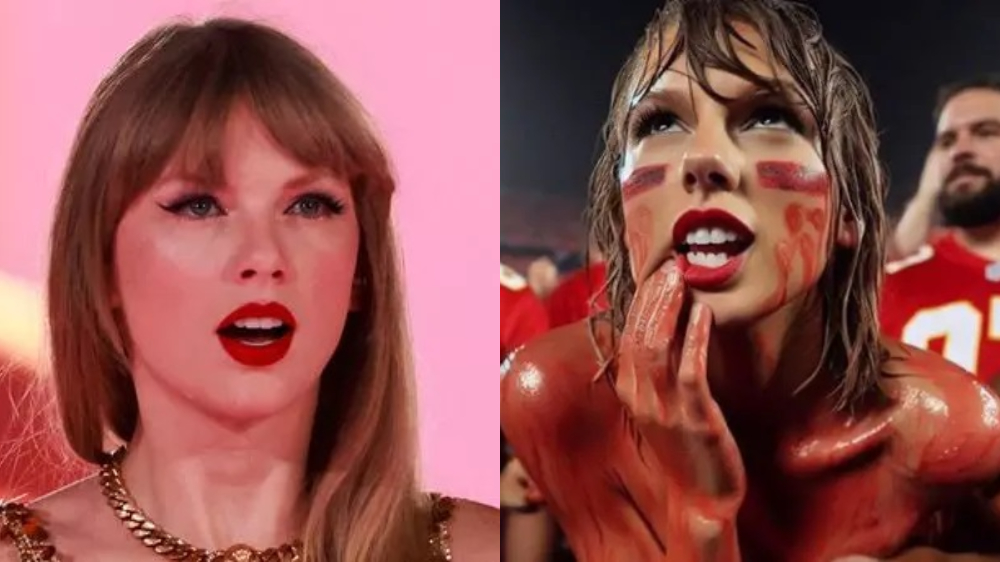Taylor Swift fans are upset as a numerous sexually explicit AI-generated images of the pop icon went viral on Twitter.
The ravenous Swifties are on a warpath as hashtag #ProtectTaylorSwift is trending on social media platforms. However, their passionate defense has sparked criticism and concerns about the extent of their influence.
Taylor swift, oh the woman that you are.
nobody deserves that. that was so disgusting and vile.
hoping she takes legal action
AS SHE SHOULD 👏👏
protect taylor swift 💕☹️ pic.twitter.com/j6h38YmtVp— Lai swift 💞✨ (@LaivenJohnson) January 26, 2024
In the latest internet controversy, sexually explicit AI-generated images of Taylor Swift have gone viral on X (formerly Twitter), prompting a surge in discussions around the issue of AI-generated fake content.
Im not a swifty, but the spread of Taylor Swift AI pictures should be stopped.
PROTECT TAYLOR SWIFT pic.twitter.com/F9lCEuMst0— kashmalaMK (@KashmalaMk13720) January 26, 2024
The disturbing pictures feature Taylor Swift in a series of sexual acts while dressed in Kansas City Chief memorabilia and in the stadium. The singer has hinted at taking legal action against the culprits.
Some netizens are expressing frustration with the intense devotion displayed by Swifties, characterizing it as cult-like behavior.
One of the explicit posts gained significant traction, accumulating over 45 million views, 24,000 reposts, and hundreds of thousands of likes and bookmarks before the account responsible for sharing the content was suspended for violating platform policies. Despite the suspension, the images continued to circulate across other accounts, and new graphic fakes emerged.
The origin of these images is speculated to be a group on Telegram, where users share explicit AI-generated content, often created with Microsoft Designer. Reports suggest that members of the group joked about the viral spread of the images on X.
The incident has reignited debates on online platforms’ ability to combat the dissemination of AI-generated explicit content. While X’s policies explicitly prohibit such content, the challenge lies in the swift spread of these images and the difficulty in removing them completely.
The term “Taylor Swift AI” gained prominence as a trending topic in some regions, amplifying the visibility of the explicit content.









